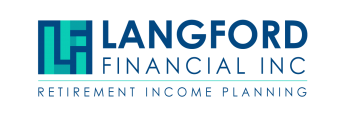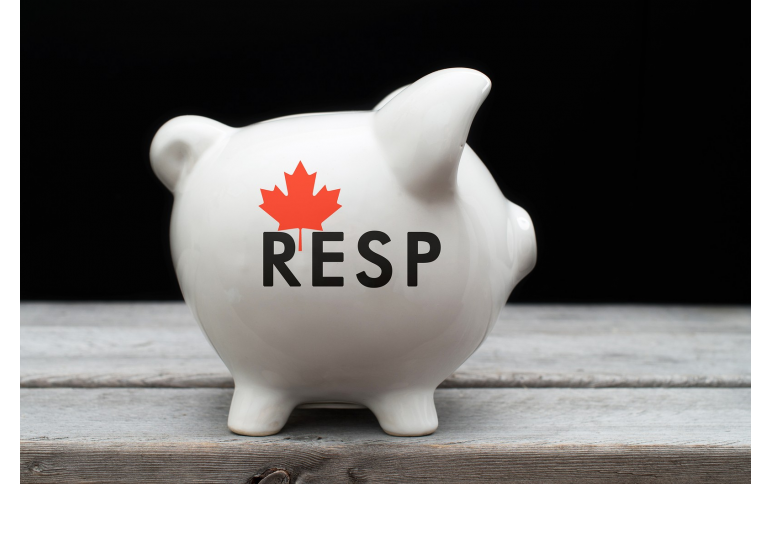One of the proudest moments occurred in 2016 as our son, Caleb, graduated from Mount Royal University with a 4-year degree in Business. This was a proud moment because if we had caved into the constant negativity that teachers had written in his "Agenda" over the years we would have given up hope that he'd ever make it pass High School. He did graduate from university and well ahead of his peers.
He did it! That's what matters!
We are also proud that he did it debt-free because of his RESP and working a part-time job. He now works a full-time job in his field and we don't have to worry about him moving back in with us.:) RESP's are a great idea and here's a guide to help you get one started for your kids or grandkids. The deadline to qualify for each year's free grant money from the federal government December 31st.
If you're like many soon-to-be retirees you have "Helping Grandkids go to University" as one of the items on your bucket list. As part of retirement income planning, this is just one of the items that we incorporate into our strategic planning when helping clients accomplish what is important to them about money. To help you understand the benefits of setting up an RESP for your grandkids here's some help with the basics.
Basic RESP contribution rules and numbers to know
- $2,500 – Amount of annual grant-eligible contribution room accrued each year starting in 2007 or the year the child was born (whichever is later). The contribution room continues accruing up to and including the year when the child turns 17 years old. This amount is based on the calendar year and not the birth date.
- 20% – Amount of grant earned on an eligible contribution. For example, a $1,000 contribution would earn a grant of $200 if that contribution is eligible for a grant. There are additional grants available for lower-income families.
- $500 – Maximum amount of grant a beneficiary is eligible to receive for each calendar year from the year they were born or 1998 (whichever is later) to the year they turn 17 years old. A calendar year is from January 1st to December 31st.
- $7,200 – Lifetime grant limit per beneficiary. If you contribute $2,500 every year, you will hit the maximum grant level in the fifteenth year, and no more grants will be paid to the beneficiary. This limit includes additional grants available to lower-income families.
- $50,000 – Lifetime contribution limit per beneficiary. Because there is no annual limit, you could potentially make one single contribution of $50,000 to an RESP if you choose.
- Contributions are not tax-deductible. You won’t get a tax slip, and you can’t deduct RESP contributions from your taxable income. It does grow "tax-deferred".
- The grant money and the growth are taxed in the hands of the child when he/she is attending a post-secondary institution. (At a near-zero rate, because they will not have enough income to pay taxes.)
- Contribution room carries over. One of the great features with an RESP is that you can carry over unused contribution room into future years to a maximum of $1000 of grant money in any calendar year.
For example: If you start an account for your six-year-old child, you can contribute $2,500 (this year’s contribution room) plus another $2,500 (from previously unused contribution room) for a total of $5,000, to receive a grant of $1,000. You are allowed to contribute more than $5,000 in this scenario, but there will be no grant paid on the amount above $5,000. You can only take advantage of this opportunity until December 31st of the year the child turns 17. So act soon if this applies to you.
RESP contribution examples
Simplest example:
Phillip was born in 2014. His parents are broke, but his grandmother decides to open an RESP account for him.
She opened the account in 2014 and has $2,500 of contribution room available. She contributes $1,500 to the account in 2014, so the RESP grant is $300 (20% of $1,500).
In 2015, she contributes $1,200, thereby qualifying for a $240 grant.
RESP family plan contribution allocations
If you have a family plan with two or more beneficiaries, you need to allocate each contribution between the beneficiaries. For example, you might want to set up all contributions to be divided equally between the account beneficiaries. Or you might have a particular contribution that should be allocated to just one beneficiary. You must set the allocation so the government can track the grants for each child.
When you open an RESP account or add a new beneficiary to an existing account, you can set up the default allocation to split the contributions equally among the children on the account. If you want to make a contribution with a different allocation, you have to indicate this on the purchase order.
It makes no difference whether you open a family plan or have an individual plan for each child. The only advantage to a family plan may be less paperwork and mail coming to your house.
Please note: There are special rules for kids Turning 17 years old:
By the description “turning 17” I’m assuming the child is turning 17 in the current year. There are special rules for 16 and 17-year-olds with respect to the government grants which mean that this child won’t qualify.
The rules are as follows:
RESPs for beneficiaries aged 16 and 17 will be eligible for RESP grants only if at least one of the following conditions is met:
- At least $2,000 must have been contributed to an RESP for the beneficiary before the end of the calendar year the beneficiary turned 15 and not withdrawn.
- At least $100 must have been contributed to an RESP for the beneficiary in each of any four years before the end of the calendar year that the beneficiary turned 15 and not withdrawn.
Group RESP Plans:
There are a number of Group RESP plans available from companies like Heritage and CST. These are not necessarily bad plans and if you have started one it is not usually advantageous to end it now (high fees to get out). They do lack flexibility and usually have a lot of fees, especially if you try to terminate. They are difficult to understand and most of the time you will be left bewildered. If you have one - keep it. If you have additional children, you may be better off starting a new plan with a more traditional, lower fee provider. You can have more than 1 RESP plan with different providers.
What if you missed out on previous years?
If you have not contributed enough to maximize your grant, you can catch up on it in future years but the maximum grant that they will give you in any calendar year is $1000. That means you can only catch up on the grant one year at a time. Let’s say you have a 3-year old (born 2013) and are now in a position to catch up on the RESP grants. This year, you can contribute $5000 to the RESP and get a $1000 grant. Next year, you can contribute another $5000 to get another $1000 grant. The following year you can do this for one more year and then you will be caught up from previous years.
What happens if the child does not go to school?
- Keep the RESP going, just in case. The RESP can stay open for 36 years in case your child does not go to school right away, they can still go later.
- The money can be transferred to a sibling but there are lifetime grant limits per child ($7200). If a siblings total grant exceeds this amount after the transfer, excess grant money must be returned to the government.
- All contribution money and growth can still go back to the contributor with no tax implications
- All grant money (20%) has to go back to the government unless there is a sibling to transfer it to.
- All remaining money is taxed at your marginal tax rate. If you have RRSP contribution room, you can transfer money to your RRSP to avoid the tax.
Additional Grant Money for Lower Income Families
The Additional Canada Education Savings Grant (A-CESG) is available to children from low-income and middle-income families up to the end of the calendar year they reach the age of 17. There are, however, grant eligibility restrictions for kids during the years when they are turning 16 and 17.
This grant is available as long as:
- the child is a Canadian resident;
- the child has a valid Social Insurance Number;
- an RESP has been opened in their name;
- contributions have been made to their RESP; and
- the Additional Canada Education Savings Grant has been requested.
- 2018 net family income is less than $93,208
How to Set up an RESP?
If you require additional information or want to get an RESP started for your grandchild we can help you. We deal with a few providers for our RESP's and none of them have any cancellation or transfer out fees. It's a very simple, low-cost plan which gives grandchildren the funds for a post-secondary education and a higher probability of success in life. You will need a Social Insurance Number for each child in order to complete an application. The minimum contribution is $25 per month - which is a great starting point. Both parents and grandparents can contribute to the plan.
Having a proper retirement income plan enables you to have the means to do meaningful things like helping grandchildren fund their education.
Want to get your financial house in order? Click here to Book an appointment
Attend a seminar! Click Here!
Advisors for Advanced Retirement Income Strategies,
Willis & Nancy
Ph: 587-755-0159







